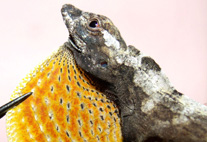Abstract
Study of four poorly known cladocera species of the genus Camptocercus Baird,1843 (Anomopoda: Chydoridae): North American C. oklahomensis Mackin, 1930, and three Palearctic species, C. uncinatus Smirnov, 1971, C. fennicus Stenroos, 1898, and C. lilljeborgi Schoedler, 1862, revealed strong differences between them in both outer morphology and morphology of appendages. C. oklahomensis lacks a head keel, typical for the most species of the genus, and has numerous characters confirming its basal position within the genus, namely less elongated postabdomen with groups of elementary marginal denticles and less specialized morphology of the thoracic limbs. C. uncinatus and C. fennicus have similar limb morphology, these species form a monophyletic clade with South-East Asian species C. vietnamensis Thanh, 1980. C. lilljeborgi have a straight ventral margin of valves with specially dense setation, similar to the species of the genus Graptoleberis Sars, 1862. C. lilljeborgi also has most derived appendages, i.e. exopodites of limbs III–V have seta 4 reduced to a state of a small stub, and seta 3 with extremely wide basal portion. The level of differences in thoracic limb morphology in Camptocercus is unusual for the subfamily Aloninae, where in most genera limb morphology is relatively uniform. Morphology and phylogenetic relationships of the studied species are discussed.

